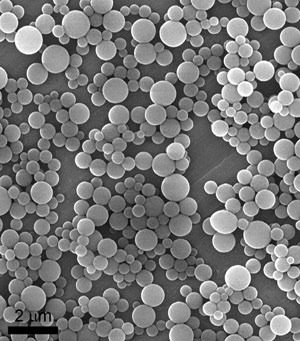Encapsulating materials and then controlling the amount and time of their release is one of the most developed and updated approaches in the fields of chemistry, medicine, materials science and environmental science.

Chemists from Spain have developed and patented an innovative method by which tiny organometallic capsules are obtained that range in size from micrometers to nanometers. These capsules will be able to wrap materials found in nanospheres characterized by internal properties such as magnetism, fluorescence or electrical conductivity, and which could be useful in the fields of radiological diagnosis and monitoring, electronic components or sensors.
Encapsulating materials and then controlling the amount and time of their release is one of the most up-to-date developed approaches in the fields of chemistry, medicine, materials science and environmental science. This approach is based on the idea of the "magic bullet", which has been discussed for a long time, mainly in the field of medicine: the ability to transport medical materials to a certain site where it is needed, and only to it.
To date, this method has been possible using liposomes (common in cosmetics), dendrimers (polymeric macromolecules) or polymeric organic particles. In these cases, the wrapping is done using organic furs. However, thermalization of materials inside metal-containing particles has not been achieved to date.
Spanish researchers have developed a method for obtaining tiny organometallic capsules (composed partly of an organic part and partly of a metallic part) ranging in size from micrometers to nanometers. The use of a metallic component implies that these nanospheres may have metallic properties, such as magnetism, fluorescence or electrical conductivity and which would be useful in medical applications such as radiological diagnostics and monitoring, electronic components or sensors. An article on this research was recently published in the scientific journal Angewandte Chemie International Edition.
The method allows the preparation of certain nano- and microspheres through the connection of two units: an organic powder, which serves as "glue" and a metallic ion. Usually, the organic compound shares a pair of electrons with the metal ion and this fact allows them to bond together. A simplistic description of the method would be the mixing of a solution consisting of metal ions, organic particles and the active substance that would be wrapped at the end of the process. When the solution is mixed, by mechanical or ultrasonic means, the metal ions bind to the organic particles to form spheres, while trapping the active substances in the kirban. Therefore, the system is relatively simple and does not pose any obstacles to its industrial application.
"However, this simplicity does not mean that it cannot be used for various other purposes. Depending on the composition of the mixture, its concentration, rate and nature of agitation, and the rate at which each component is added to the system - it is possible to change the size of the particles as well as their properties such as porosity or fluorescence. All these factors can be controlled and changed according to the final application required. For example, porosity is an important characteristic of nanospheres designed for the controlled release of the substance they contain through the nozzles of the capsule," the scientists explain.
In many other cases, however, the substance is released during the disintegration of the nanosphere, which occurs at a given moment (which can also be controlled) and releases the contents of the capsule.
It is also possible to change the nanosphere units themselves (metallic ion and organic compound) according to the required application. For example, such a theoretical application could be a nanosphere composed of the metal ions gadolinium, which could enable its use as a contrast agent in radiological diagnosis and at the same time lead the active substance directly to the cells requiring treatment, through the introduction of an antibody that will recognize and lead to the target cells.
The possibilities are almost endless and the selection of the appropriate particles will not only depend on the desired application but also on the expected stability of the resulting nanosphere. In the article, the researchers describe the findings obtained for spheres prepared from zinc, which is able to maintain its stability in alcohol for about six months. This period is sharply reduced to only a few days for water or blood. The scientists note that they are still exploring ways to make these spheres more stable.
The advantage of the therapeutic approach compared to conventional drug delivery methods lies in the fact that with this approach the number of side effects can be reduced thanks to the selective release of the drug at a specific site where the treatment is required. As a result, the amount of drug required is reduced and the necessary drug concentrations are maintained for a longer period of time. This approach is already applied in practice today in treatments against cancer and lung diseases.
